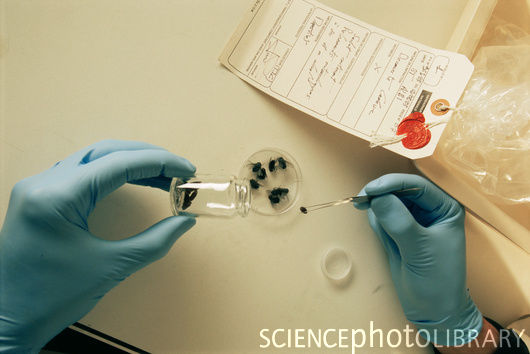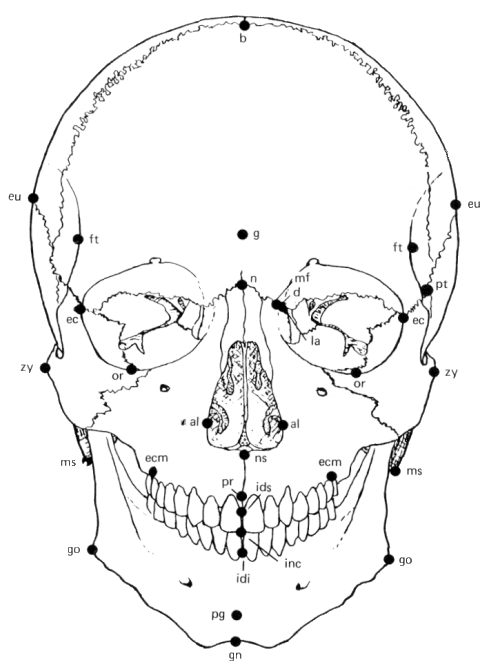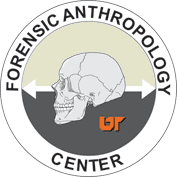Some fun facts about forensicsForensics is defined as any science applied to the law, which includes many different categories. Here are just a few... Palynology This science uses pollen and spores to solve crimes and legal disputes. Forensic palynologists make inferences about how landscapes looked like thousands or millions of years ago. This is helpful information when reconstructing a sequence of human events. The pollen and spore evidence can be used in a variety of applications. They can link a suspect to the crime scene, pinpoint certain areas of interest, or test the authenticity of a painting to avoid frauds. Other areas of examinations in palynology include dust, mud, human/animal hair; packing materials, food, and illegal drugs. Forensic palynology investigates the 'where' of a crime scene. It questions where the suspect would be at the time, where the crime took place, and where did the transfer of illegal products happen. By answering these types of questions, we might be able to find a suspect to place at the scene of the crime. Pollen and spores evidence are usually collected from the victim's clothing, skin, and hair, the surround area of the crime, and from the clothing a suspect wore at the time law enforcement suspects the crime occurred. Recent History The first two cases in which forensic palynology significantly contributed to solving was in Europe in 1959. At first, palynologists only examined pollen and spores evidence, but by mid-twentieth century they started to research the fallen pollen that landed onto soil and other surface to link suspects and victims to crime scenes. Only very few countries use forensic palynology in cases and the science is hardly recognized in the United States. Right now, not all law enforcement agencies are familiar with palynology, and therefore lack funding for expensive laboratories that specialize in palynology. [6] Entomology This category applies the science of insect biology, ecology and behavior to legal cases. It consists of 3 fields: medico-legal, urban, and stored products. Medico-legal uses insects to solve violent crimes. Some common investigations that use medico-legal, are suspicious, sudden, and accidental deaths like car accidents. This field has the most public attention because television crime shows mainly focus on this specific area of entomology. Urban entomology involves researching insects in buildings, human-made structures, and other locations in the human environment. Usually cases that require urban entomology are situations that require searching for the source of an insect infestation. Stored-products entomology looks for insect infestations in stored food, and determines when and from where insects invaded the food. Not only law enforcement agencies need this service, but also private businesses and insurance companies make use of this field. Even though using insects to prove the facts of the case, forensic entomologists are rare. It is only recently that forensic entomologists are being recognized as an important factor in crime-scene investigations in North America and Canada. History Although entomology is a relatively new area of research in America, other countries have been using insect evidence to solve crimes for nearly 800 years. The earliest record dates back to year 1235 in China, where a lawyer/death investigator solved a murder by observing maggots. The body was found in a rice paddy field and slash wounds were consistent with a rice worker's sickle. The investigator saw flies circling a worker and that particular worker eventually confessed to the crime because microscopic particles of dried blood and skin clung onto his sickle which attracted the flies. [6] Anthropology Forensic anthropology is an application of expert knowledge and analysis about skeletal anatomy. Forensic anthropology work includes the identification of the deceased when the body has decomposed to a point beyond facial recognition. Other works can include helping law enforcement agencies identify human remains at the on site or helping them recover remains without disturbing evidence using archaeological skills. Forensic anthropologists also have the ability to estimate age, sex, and race of the deceased. Although they can find the cause of death, they don't have the authority to declare officially. They can also serve in court as expert witnesses because of their wide knowledge of the skeletal body. [18] 150 years ago, Dr. Jeffries Wyman was the first to solve an appalling murder case at the famous Harvard University using both the practices of anthropology and instincts of a forensic investigator. He put together a team of specialists to examine the human remains and determined that the body matched the missing professor's profile. This evidence was able to convince the jury to find the suspect guilty. It was the first documented case that used forensic anthropology to help solve a crime. Now Wyman is referred by many as the father of forensic anthropology. [21] In 1897, a sausage maker named Adolph Luetgert, reported that his wife went missing. However, his wife's family believed he was responsible for her disappearance. The police examined the sausage factory and found the wife's ring and four bone fragments contained in a large puddle of 'congealed substance'. They were able to charge the husband with murder after learning a human body could dissolve in the substance for about two hours and be virtually destroyed. In court, George Dorsey, a physical anthropologist, was able to prove that the four bone fragments were indeed human. In the case of Adolph Luetgert, the testimony of George Dorsey, showed an emerging partnership between science and the legal system. "It was the first occasion in American history in which an anthropologist testified on a matter of forensics at trial."[21] |
Innovators: Palynology For over 35 years, GNS Science has worked in the forensics field individually and in team situations with police and scientists from other Crown Research Institutes. "Every criminal either takes something from the scene or leaves something behind. If that something involves grit, sand, soil, dust, spores or pollen we can help."  A palynologist's job is to identify and formulate a conclusion based on a sample of pollen or spore. They are able to draw a picture of where the pollen came from. Palynology forensics can refute or confirm alibis. In drug-related cases, it can be used to indicate what area it was grown in. Generally palynology is used in serious cases such as murder or rape in order to link people at the crime scene. However, It can equally be used by the defense to disprove a potential link. [17]  "Caption: Forensic entomology. Forensic scientist sampling flies found on a corpse. Identification of the flies can provide information on how long the body was dead before it was found. Different species of fly and other insect lay their eggs at different times, and their larvae feed on different tissues. By studying the insect population in a corpse, a very accurate time of death can be calculated, which is an important piece of information in helping to identify the killer." [16]  A forensic anthropologist's job require immense memory of the human bone structure. Sometimes they will receive remains that are not even human, therefore it is important for them not to assume anything. [18]  Innovator: Forensic Anthropology service; University of Tennessee; Body Farm "The Anthropology Research Facility is the first of its kind to permit systematic study of human decomposition. The 1.3 acres of land made famous by Dr. Bass will soon be expanding. This addition will allow for studies using advanced technology to quantify how bodies interact with the environment." This organization also offers its services of recovering human remains to various medico-legal agencies.[19] |
